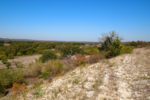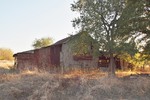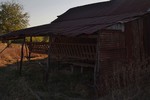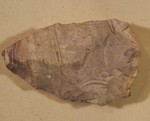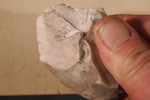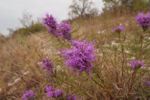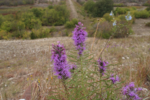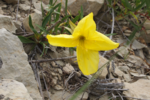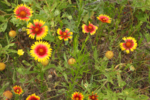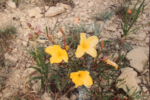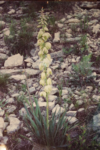
Local History and Environment
The strata known as the Hunton group were first described by Taff (1902, 1904) as the Hunton limestone, the name being taken from the town of Hunton. While no trace of this town exists today, the surveyors' plat originating in 1902 describes the location of the town as being near where a barn resides at the base of the mountain exposure. This barn apparently has no relation to the original structures that were built within the town after its’ designation in 1903. Subsequently, the town was burned down in perhaps a suspicious fire in 1906. Later, this area was informally known as Kite, and a schoolhouse was in existence until 1930, after which schools surrounding Clarita were consolidated to Clarita. Portions of the Kite schoolhouse were used in construction of the Clarita schoolhouse, and some of the dwellings that were inhabited here were also moved to Clarita.
I had the privilege of meeting one of the residents of Kite in 2011 when he was visiting the property with his nephews. Being very cognitive for his age, he showed me the bullet holes in the door frame of what was once his house as a boy, and relayed stories about his days as a child while living in this area. At the age of 12 in 1932, his family left Oklahoma and moved to California. He stated that the house was then moved to its’ present location, and converted into a barn by Jack Patton, a former owner of this property. While no trace of the original town of Hunton exists today, it isn’t difficult to feel the presence of that bygone era while visiting this area. It is obvious that not much has changed regarding the landscape that drapes over it. And fortunately for us, the brief history of this town is commented upon within publications printed during the years of its’ existence within the Wapanucka Press, in which descriptions of events and notices of resident’s activities and visitations are summarized weekly within a section entitled “Hunton Notes”. After reading some of these articles, one gets the “feeling” of knowing this town’s history. Hunton, although very small, featured a general store and post office, a pharmacy, and a livery stable. Among the small population were two doctors, one of which owned one of the four lots described within the town plat.
History has erased all traces of the town of Hunton, even to the point of where it is located, as evidenced by the Coalgate Historical Societys' lack of knowledge as to that fact. I am confident that the surveyors' plat represents the true location of the town as deeded. The presence in testimony by several individuals regarding the location of the Kite schoolhouse upon the property following Huntons' demise is also well established. In time, I expect artifacts of this period to be recovered within the soil.
Artifacts of a different nature also occur at the Old Hunton town site locality. They include chert arrowheads and scrapers derived from local material and otherwise, that have been abandoned and scattered about this area. They appear to be very old, even within Native American culture. No derivation has been done however, by any recognized authority regarding these artifacts to my knowledge.
Wildflowers
These photos were taken within and around the Old Hunton town site locality. Many of the wildflowers grow only within the outcropping areas of the Devonian formations. I have not been able to identify them to their common name terminology. So any help would be appreciated!
Animals
Animals are plentiful at the Old Hunton town site. While collecting, one may encounter many species of insects. Representatives of grasshoppers, beetles, wasps, dragonflies, bottleflies, and butterflies occur in many varieties of color and size. Spiders are often found underneath rocks, from daddy long legs to tarantulas, along with millipedes, centipedes, and scorpions. On occasion, small mice are observed, collared lizards, and snakes of various sizes, including rattlesnakes.
On the land adjacent to the outcrop, any number of animal species might be present. For instance, an armadillo can often be seen at dusk, or a road runner may be seen scampering by during the day. Deer, rabbits, turkeys, and boar are occasional foragers, and visits are known to occur from coyotes, bobcats, and mountain lions during the night.
In 2003, while being shown the property, I glimpsed a rare lynx behind some high grass in the hayfield. That sighting endeared the name Lynx Mountain to the outcrop area, as the sister locality to Black Cat Mountain.
